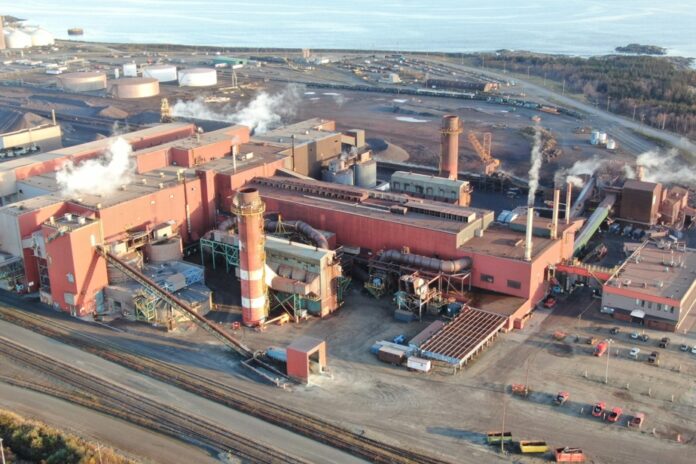Launched in May 2022, the ArcelorMittal project consists of the gradual substitution of heavy fuel oil used as an energy source in favor of pyrolytic oil, which is made from wood residue.
The idea emerged in Port-Cartier in 2020, when a “relaunch committee led by the mayor [of the municipality] decided to bring together the great resources of the North Shore and create a regional energy ecosystem,” reports Mapi Mobwano, President and CEO of ArcelorMittal Canada. “We have a strategy from forest to steel, which aims to transform the by-product that cannot find a buyer and transform it into renewable energy. » In the case of mining, the oil is used to produce iron oxide pellets, without the quality of the finished product being compromised.
Sawdust, planing and small wood chips that are not used for lumber in the Arbec sawmill are recovered and then sent to a processing plant.
“We take the wood, refine it a little and dry it at high temperature,” explains Patrick Gwilliam, administrative vice-president and development at Arbec Bois d’oeuvre. In a few seconds, the reactor [which runs on hot sand] ages the wood for a million years. This creates a gas that we will condense and which itself creates biofuel. The non-condensable gas returns to the dryer and feeds it. »
“The mining sector has evolved a lot,” says Mapi Mobwano. We operate within a fairly strict regulatory framework. There are a lot of efforts going in this direction. »
Since 2016, the forestry sector has also been forced to move in this direction. It is increasingly prioritizing sustainable energies, at the expense of pulp and paper. “Today, without bioenergy, the sawmill would be completely closed,” admits Patrick Gwilliam. These are significant challenges, but oh so interesting. »
To answer simply, both sides are very satisfied. “Collaboration between forest and steel is important,” insists Mr. Mobwano. These two natural resources represent the strength of the North Shore. We want to become a global model in terms of decarbonization, and we are working very hard to achieve this vision. »
“The synergy with ArcelorMittal, with the direction we are taking, could not be more perfect,” adds Mr. Gwilliam. The beauty about them is that they are about 2-3 miles from our house. So the transport, which is done by specialized trucks, they can come 10 to 20 times a day. »
ArcelorMittal used 15 million liters of pyrolysis oil in its first year. This represents a reduction of 23,000 tonnes of greenhouse gases, the equivalent of around 5,000 cars. By the end of 2024, the mining company plans to have a consumption rate of 32 million liters, or the equivalent of 11,000 cars, then reach the factory’s maximum production: 40 million liters.
Despite everything, the majority of ArcelorMittal’s activities will continue using heavy fuel oil. “Our goal is to replace 23% of production because pyrolytic oil has limitations in terms of energy. For every liter of heavy fuel oil we replace, we will use two liters of pyrolytic oil,” notes Mapi Mobwano.















